Economic, disease issues move farms away from coasts
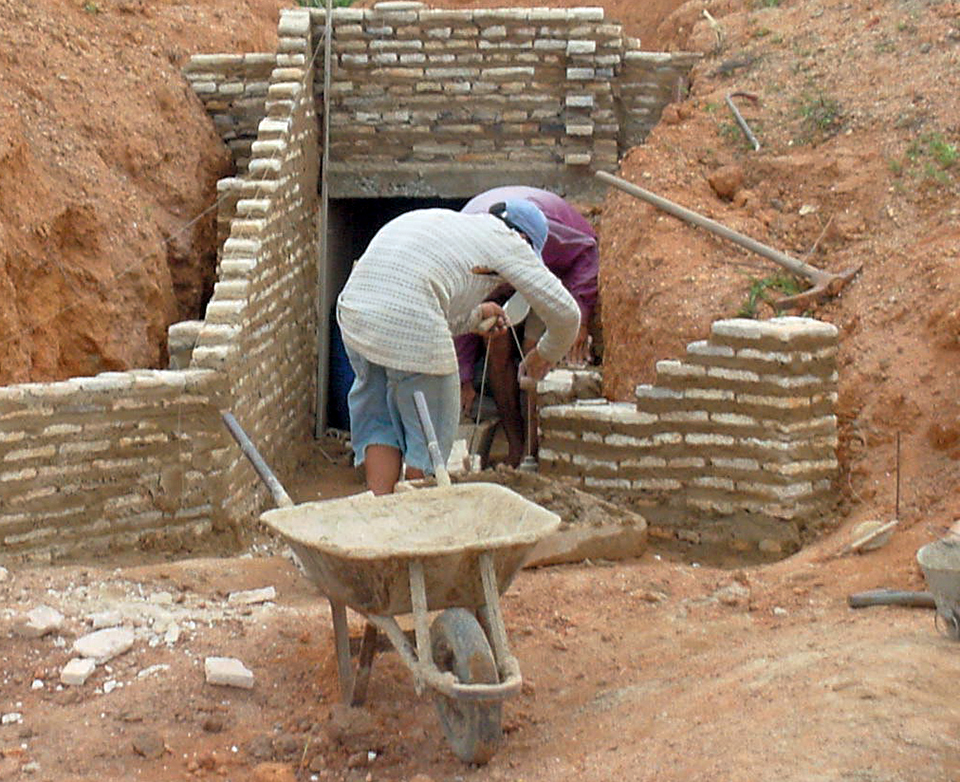

Penaeid shrimp inhabit many aquatic habitats, from marine through estuarine to fully freshwater environments, and their inherent ability to tolerate a broad range of salinity variations is key to their survival. Many shrimp producers are now taking advantage of this distinctive characteristic to rear some species in oligohaline or low-salinity waters with less than 1 ppt (parts per thousand) salt.
In Latin America, former tilapia farms 50 km from the closest seawater source are now in full production of Pacific white shrimp. Such inland shrimp farming close to saline river effluents is becoming more feasible due to the increased land competition, high investment costs, the spread of disease, and environmental restraints associated with coastal shrimp aquaculture development.
Salinity tolerance
While some Penaeus species are considered stenohaline, having the ability to live within only a narrow range of salinity below that of seawater, several species are euryhaline and able to withstand sudden salinity fluctuations as great as 10 ppt. Euryhaline species include the Pacific white shrimp (Penaeus vannamei) and the black tiger shrimp (P. monodon), both recognized as strong osmoregulators.
In some Brazilian grow-out farms, white shrimp may be exposed to hyperoceanic salinity levels of around 50 ppt. In southern Ecuador, where shrimp production first started, many farms operate with salinity concentrations as low as 1 ppt.
Acclimation procedures
A major requirement for the success of low-salinity culture is the acclimation process, which shrimp must undergo before pond stocking. P. vannamei can achieve osmotic balance and fully acclimate to salinity environments below 1 ppt through gradual drops in environmental salinity during its postlarval stages.
Although acclimation protocols differ greatly between hatcheries and grow-out farms, shrimp survival during acclimation commonly exceeds 90 percent. In hatcheries, both the chronological and morphological age of postlarvae (PL) are used to determine their readiness to acclimation. PL must be at least eight days old to adequately withstand a reduction in salinity. PL as young as six days may also be used, although acclimation is longer, riskier and more stressful.
Gill development and osmoregulation
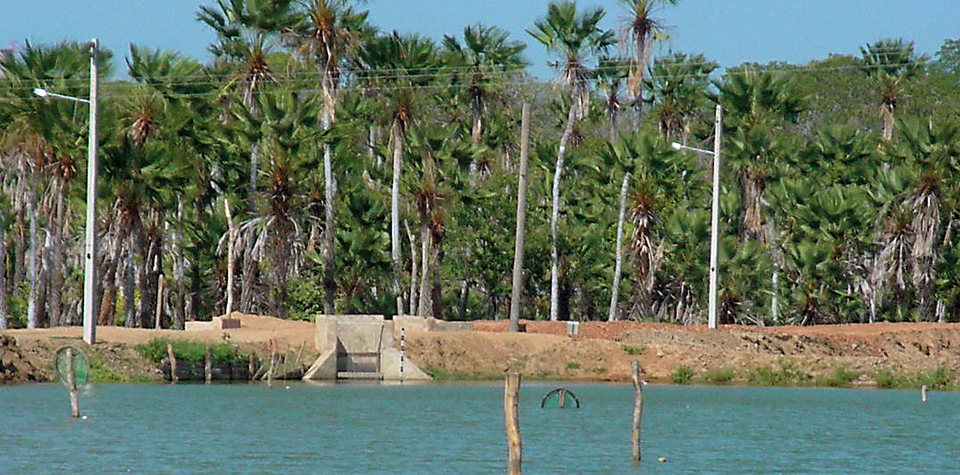
Shrimp osmoregulatory capacity is related to the branched development of their gills. Gill filaments only appear in penaeids during their later mysis substages. During the early postlarval period, gills are in a rudimentary stage and only reach full development in the late postlarval phases.
In Brazil, most hatcheries operate with large rearing tanks and stocking densities of 100 to 200 PL per liter. Therefore, salinity reduction is only feasible when PL orders are high enough to compensate for the labor and time invested during the acclimation procedure. PL may be sold conditioned from 15-ppt to less than 1-ppt salinity.
In Ecuador, hatcheries acclimate PL to 5 ppt, with further acclimation completed at the farm. During the two-day acclimation procedure, tanks are drained to half their volume and seawater is diluted by gradually adding freshwater. A protocol used in Brazilian hatcheries for salinity reduction is presented in Table 1.
Nunes, Low-salinity acclimation protocol for Penaeus vannamei, Table 1
| Salinity Range | PL8 or Older | Younger Than PL8 |
|---|
Salinity Range | PL8 or Older | Younger Than PL8 |
|---|---|---|
| 35 ppt to 20 ppt | Reduce 2 ppt every 20 min | Reduce 2 ppt every 20 min |
| 25 ppt to 15 ppt | Reduce 2 ppt every 30 min | Reduce 2 ppt every 30 min |
| 15 ppt to 10 ppt | Reduce 1 ppt every 30 min | Reduce 2 ppt every 30 min |
| 10 ppt to 5 ppt | Reduce 1 ppt every 30 min | Reduce 2 ppt every 2 hours |
| 5 ppt to less than 1 ppt | Reduce 1 ppt every 1 hour | Reduce 2 ppt every 5 hours |
When full acclimation of PL is not possible in the hatchery, salinity acclimation takes place at the farm in round, 60,000-liter intensive nursery tanks or small 1,000-liter tanks. With both tank sizes, conservative acclimation procedures are used (Table 2), as PL osmoregulatory ability seems to decrease after PL15. Acclimation starts 24 hours after PL arrival, and may last five to nine days.
Nunes, Low-salinity acclimation protocol for Penaeus vannamei, Table 2
| Conditioning Period | 35 ppt to 1 ppt | 20 ppt to 1 ppt | 10 ppt to 1 ppt |
|---|
Conditioning Period | 35 ppt to 1 ppt | 20 ppt to 1 ppt | 10 ppt to 1 ppt |
|---|---|---|---|
| Day 1 | Reduce 8 ppt | Reduce 4 ppt | Reduce 2 ppt |
| Day 2 | Reduce 8 ppt | Reduce 4 ppt | Reduce 2 ppt |
| Day 3 | Reduce 8 ppt | Reduce 4 ppt | Reduce 2 ppt |
| Day 4 | Reduce 4 ppt | Reduce 2 ppt | Reduce 2 ppt |
| Day 5 | Reduce 2 ppt | Reduce 2 ppt | Reduce 2 ppt |
| Day 6 | Reduce 2 ppt | Reduce 2 ppt | – |
| Day 7 | Reduce 2 ppt | Reduce 2 ppt | – |
| Day 8 | Reduce 2 ppt | – | – |
| Day 9 | Reduce 1 ppt | – | – |
Water quality requirements
Scientists at the Harbor Branch Oceanographic Institution of Florida, USA, have conducted extensive work on the water quality requirements of P. vannamei grown under low-salinity conditions. Their recommended ranges agree with measurements made at an inland farm in Ecuador (Table 3).
Nunes, Recommended water quality levels for Penaeus vannamei, Table 3
| Water Quality Variable | Recommended | Observed |
|---|
Water Quality Variable | Recommended | Observed |
|---|---|---|
| pH | 7.0-8.3 | 8.9 ± 0.4 (8.1-9.8) |
| Total Hardness (as CaCO3) | ≥ 150 ppm | 630 ± 139 (300-900) ppm |
| Calcium Hardness (as CaCO3) | ≥ 100 ppm | 128 ± 20 (100-180) ppm |
| Total Alkalinity (as CaCO3) | ≥ 100 ppm | 110 ± 14 (74-133) ppm |
| Salinity | > 0.5 ppt | 1.8 ± 1.0 (0.5-5.9) ppt |
| Chloride | ≥ 300 ppm | 930 ± 540 (300-3,250) ppm |
Numbers in parentheses refer to minimum and maximum values.
Table 3. Recommended water quality levels for Penaeus vannamei culture under low-salinity conditions (Van Wyk et al., 1999), and observed values over a rearing cycle at an inland shrimp farm in Ecuador.
In addition to dissolved oxygen and temperature, hardness, alkalinity, sodium, and chloride levels are critical. Under low-salinity conditions, these variables may be restrictive because they directly interfere with crustacean osmoregulation, exoskeleton formation, and water equilibrium.
Salinity
Water can be classified according to its salinity ranges as follows: limnic, below 0.5 ppt; oligohaline, 0.5 to 0.6 ppt; mesohaline, 0.6 to 18 ppt; polyhaline, 18 to 30 ppt; and, oceanic, 30 to 40 ppt. Adult P. vannamei can tolerate limnic conditions for several weeks, but 0.5-ppt salinity appears to be the minimum acceptable level for their normal growth and survival. Hand refractometers do not provide an accurate reading of low-salinity waters, so farmers often mistakenly think they are rearing shrimp under full freshwater conditions when salt is present at these low concentrations.
Salinity is a measure of the total amount of inorganic salts in water, mainly chloride, sodium, sulfate, magnesium, calcium, and potassium. Chloride is the most important ion present in seawater, and thus can be used to indicate if salinity is within acceptable limits. In 35-ppt seawater, chloride concentrations can reach 19,344 ppm (parts per million). In comparison, water with 300-ppm chloride can have a salinity reading around 0.5 ppt.
Hardness and alkalinity
Hardness is a measure of the amount of calcium and magnesium in water, while alkalinity indicates the buffering capacity of the water against pH variations. In oligohaline waters, unlike seawater, calcium and magnesium can be limiting. This may result in animals with soft exoskeletons or stunted growth as a result of molting difficulties.
With alkalinity greater than 100 ppm, saltwater is also more buffered than freshwater. In semi-arid regions, however, ion concentration in water due to excessive evaporation can lead to high alkalinity in freshwater. Boyd (1990) noted that clay or loam soils often contain high amounts of calcium carbonate in contrast to sandy soils, resulting in ponds with high alkalinity levels.
In pond culture for freshwater crustaceans, 50-ppm hardness and 20-ppm alkalinity are considered the lowest acceptable limits. Water with reduced hardness and alkalinity can be adjusted by liming the soil or water.
Seasonal changes in rainfall and river runoff can cause significant water quality variations in ponds. In Ecuador, the strong influence of the El Niño phenomenon causes salinity to drop from 15 ppt to less than 2 ppt, significantly reducing alkalinity and total hardness. Although Ecuadorian farmers say this is the most productive time for shrimp farming, under continuous oligohaline conditions, rainfall must be closely monitored to keep water from reaching its lower limits.
Performance results
During low-salinity conditions in Ecuador, P. vannamei perform better and achieve commercial weight more rapidly than in dry periods. This appears to be associated with increased microalgae abundance and diversity, and a lower incidence of disease outbreaks. The rainy season also brings higher water temperatures as a result of the El Niño event.
From May to July 1998, in ponds located in the El Oro province, 15-g shrimp were harvested after three months of grow-out, with a mean productivity of 1.5 metric tons (MT) per hectare per crop. Although higher river discharge and rainfall increased the amount of suspended solids in pond water, the shrimp did not appear to be affected by gregarines and other parasites. Vibrio bacteria counts were below 100 colony-forming units per milliliter, and shrimp survival exceeded 50 percent.
In Brazil, P. vannamei grown under continuous oligohaline waters performed as well as under oceanic water conditions (Table 4). Despite a longer production cycle and lower survival for shrimp reared with riverine water, FCR, productivity, and final body weight were not statistically different.
Nunes, Penaeus vannamei performance, Table 4
| Culture Parameter | Oligohaline Water | Oceanic Water |
|---|
Culture Parameter | Oligohaline Water | Oceanic Water |
|---|---|---|
| Area (ha) | 3.0 ± 1.7 (1.3-7.0)a | 5.3 ± 1.9 (1.5-9.0)b |
| Stocking Density (shrimp/m2) | 30 ± 4 (22-38)a | 26 ± 4 (20-42)b |
| Culture Period (days) | 122 ± 8 (113-144)a | 89 ± 6 (77-100)b |
| Shrimp Final Body Weight (g) | 11.7 ± 1.0 (10.5-13.5)a | 12.5 ± 1.4 (10.6-15.6)a |
| Yield (kg/ha/crop) | 2,155 ± 428 (1,621-3,044)a | 2,093 ± 541 (1,096-3,051)aa |
| Shrimp Survival (%) | 62 ± 12 (41-86)a | 81 ± 9 (60-98)b |
| FCR | 1.3 ± 0.1 (1.2-1.6)a | 1.3 ± 0.1 (1.2-1.5)a |
Common letters in each line denote no significant difference at the a= 0.05 level.
Table 4. Penaeus vannamei performance (mean ± standard deviation) in continuous oligohaline (13 ponds, < 1 ppt) versus oceanic water (14 ponds, 30 to 40 ppt) during two growout cycles in northeastern Brazil.
The energy cost of osmoregulation in penaeids appears to be very small. Even under extreme salinity conditions over 50 ppt, P. vannamei perform well, exhibiting only a minor detriment in food conversion efficiency.
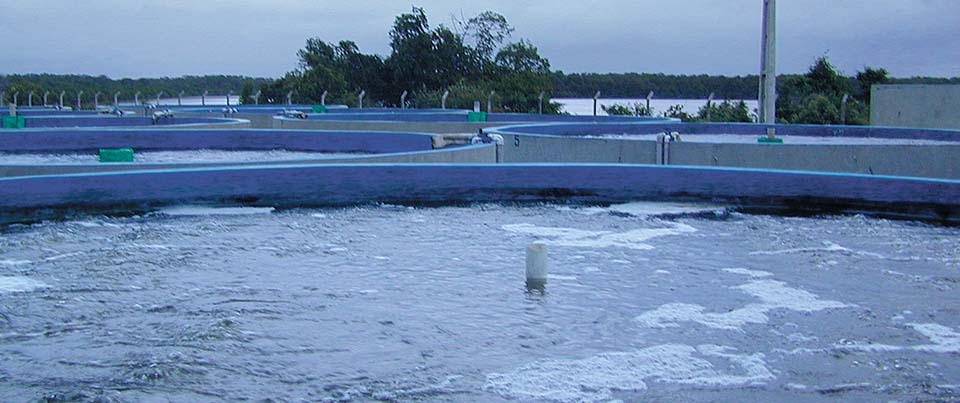
Conclusion
Low-salinity shrimp culture is a viable and profitable alternative for areas with low water salinity or saline soil features unsuitable for agriculture or other purposes. In northeastern Brazil, there are currently 240 ha of farmed area, consisting mostly of small producers. An additional 300 ha should be in operation by the end of this year. Development of inland shrimp farms is also proceeding rapidly in Ecuador. With competition and land values intensifying in coastal areas, interest in low-salinity farming will likely continue to increase.
Note: Cited references are available from the authors.
(Editor’s Note: This article was originally published in the June 2001 print edition of the Global Aquaculture Advocate.)
Now that you've reached the end of the article ...
… please consider supporting GSA’s mission to advance responsible seafood practices through education, advocacy and third-party assurances. The Advocate aims to document the evolution of responsible seafood practices and share the expansive knowledge of our vast network of contributors.
By becoming a Global Seafood Alliance member, you’re ensuring that all of the pre-competitive work we do through member benefits, resources and events can continue. Individual membership costs just $50 a year.
Not a GSA member? Join us.
Authors
-
Alberto J.P. Nunes, Ph.D.
Agribrands do Brasil Ltda.
Paulínia, SP, Brazil -
Colón Velásquez López, M.Sc.
Universidad Técnica de Machala
El Oro, Machala, Ecuador
Tagged With
Related Posts
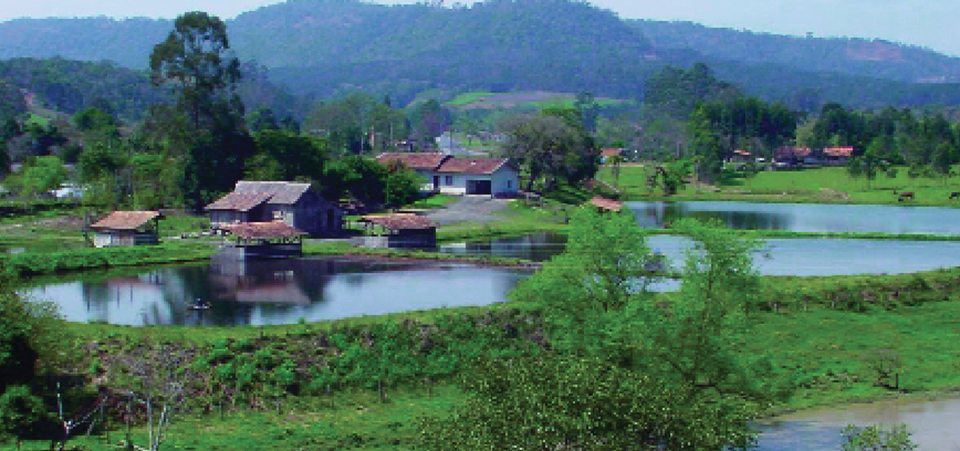
Responsibility
Brazil’s inland aquaculture
Freshwater fish culture is practiced in every state in Brazil, primarily at small-scale earthen pond facilities, but tilapia culture in reservoir cages is increasing.
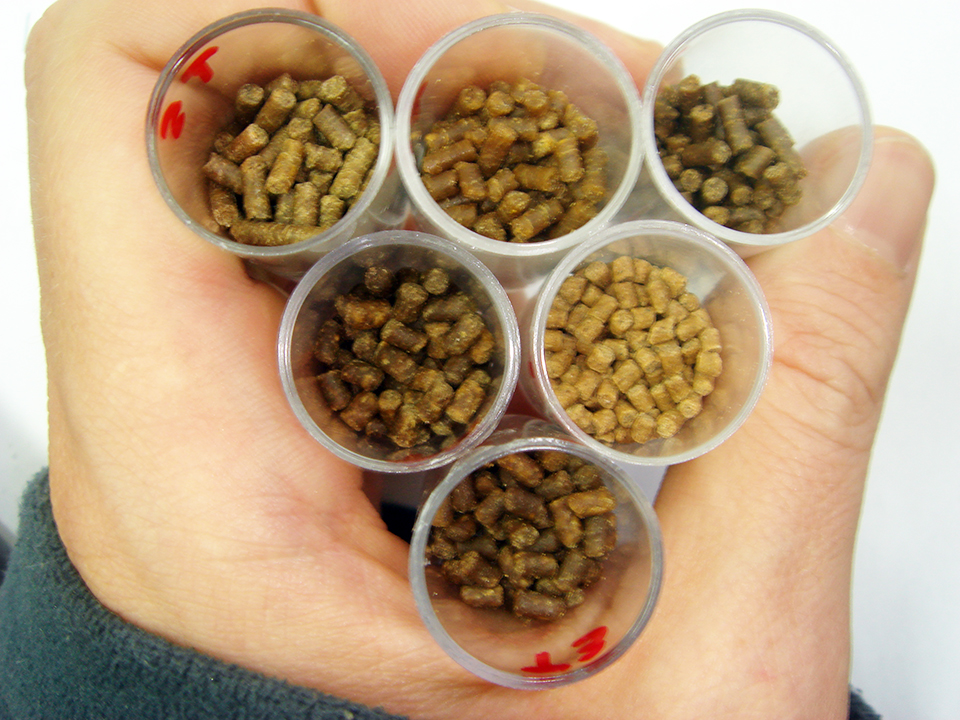
Aquafeeds
Tailoring feed to farm conditions
In a study, the authors evaluated the stability of six commercial feeds under temperature and salinity conditions that occur at most shrimp farms in Brazil.
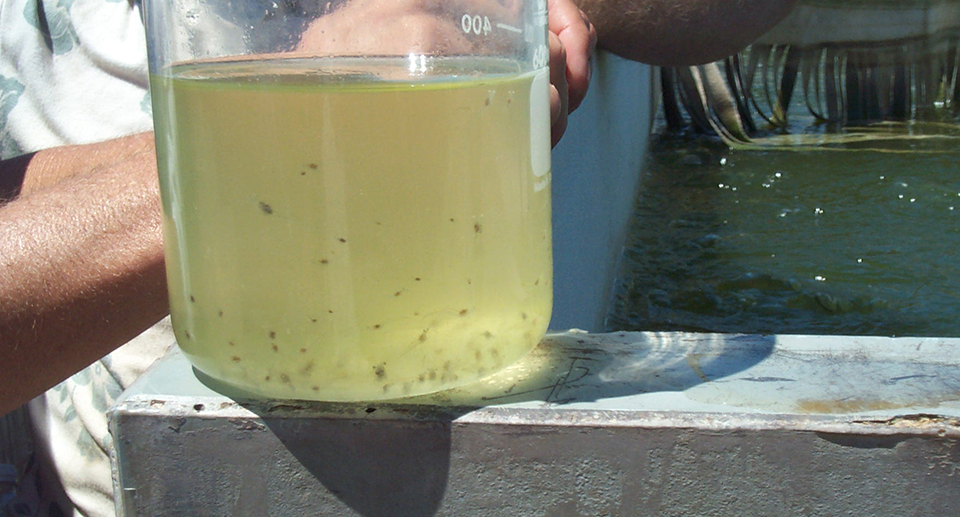
Health & Welfare
Nutritional considerations for Pacific white shrimp reared in inland, low-salinity waters
Numerous environmental, social and economic advantages support the expansion of euryhaline shrimp and fish production away from coastal environments.
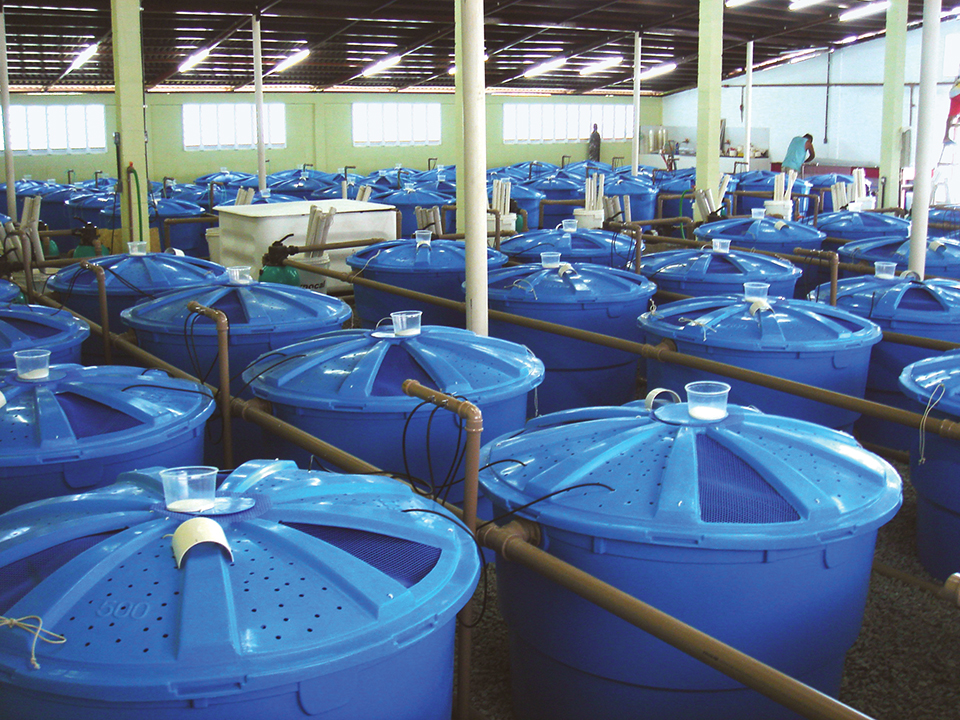
Health & Welfare
Fatty acids in feeds improve growth, lipid profiles of white shrimp farmed at high salinity
A study showed that lipid source and DHA and EPA levels in feeds can influence the growth performance and tail fatty acid profiles of L. vannamei farmed under hypersaline conditions.


